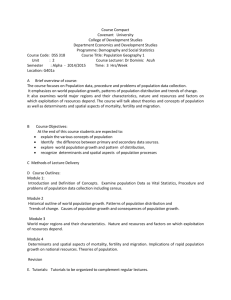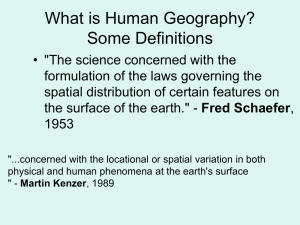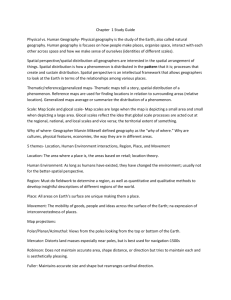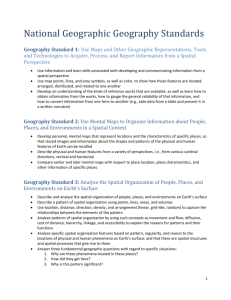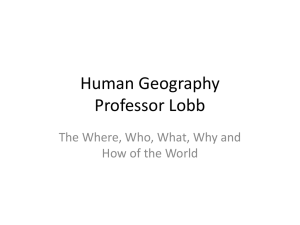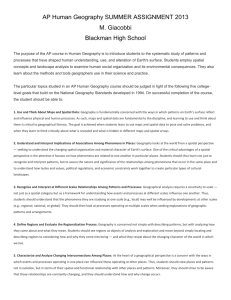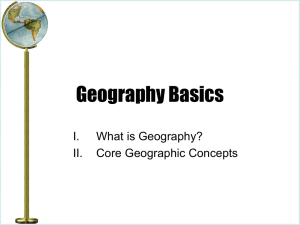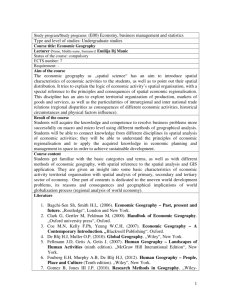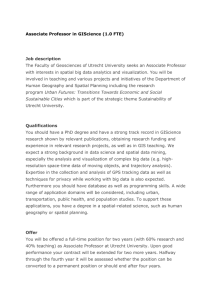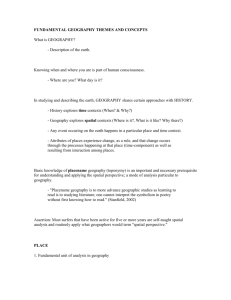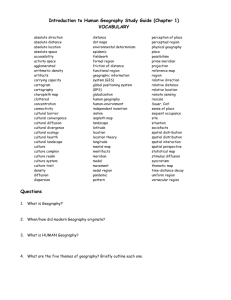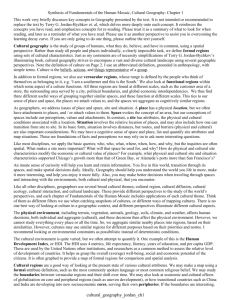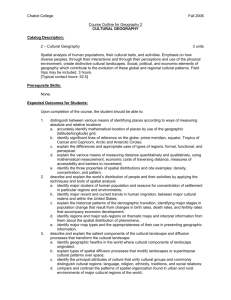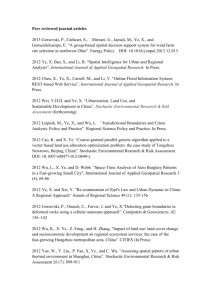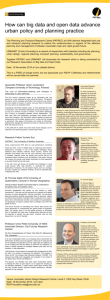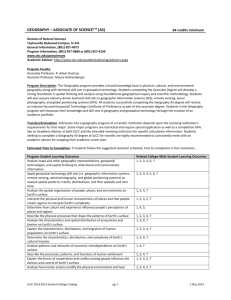GEOG 102 – 3 credits
advertisement
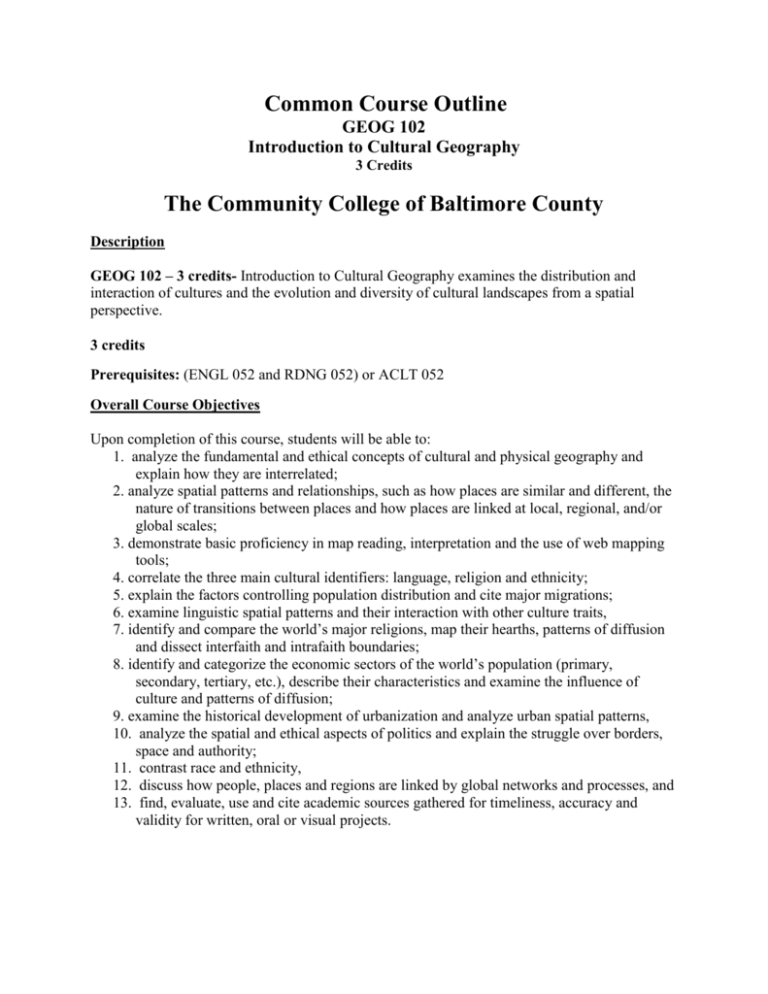
Common Course Outline GEOG 102 Introduction to Cultural Geography 3 Credits The Community College of Baltimore County Description GEOG 102 – 3 credits- Introduction to Cultural Geography examines the distribution and interaction of cultures and the evolution and diversity of cultural landscapes from a spatial perspective. 3 credits Prerequisites: (ENGL 052 and RDNG 052) or ACLT 052 Overall Course Objectives Upon completion of this course, students will be able to: 1. analyze the fundamental and ethical concepts of cultural and physical geography and explain how they are interrelated; 2. analyze spatial patterns and relationships, such as how places are similar and different, the nature of transitions between places and how places are linked at local, regional, and/or global scales; 3. demonstrate basic proficiency in map reading, interpretation and the use of web mapping tools; 4. correlate the three main cultural identifiers: language, religion and ethnicity; 5. explain the factors controlling population distribution and cite major migrations; 6. examine linguistic spatial patterns and their interaction with other culture traits, 7. identify and compare the world’s major religions, map their hearths, patterns of diffusion and dissect interfaith and intrafaith boundaries; 8. identify and categorize the economic sectors of the world’s population (primary, secondary, tertiary, etc.), describe their characteristics and examine the influence of culture and patterns of diffusion; 9. examine the historical development of urbanization and analyze urban spatial patterns, 10. analyze the spatial and ethical aspects of politics and explain the struggle over borders, space and authority; 11. contrast race and ethnicity, 12. discuss how people, places and regions are linked by global networks and processes, and 13. find, evaluate, use and cite academic sources gathered for timeliness, accuracy and validity for written, oral or visual projects. Major Topics I. II. III. IV. V. VI. VII. VIII. XI. XII. Thinking geographically a. five themes of geography b. geographic coordinate systems Population patterns and processes a. population distributions and trends b. stages of the demographic transition Folk and popular cultures a. distributions and correlations between folk and popular cultures b. influence of culture on the physical landscape The global linguistic mosaic a. spatial aspects of language as the main cultural identifier b. relationship of language with other aspects of culture, i.e. religion The geography of religion a. the intransigence of religion with regards to humans b. spatial patterns of interfaith and intrafaith religious conflicts Geography of race and ethnicity a. ethnic neighborhoods and ghettos b. migration patterns as a result of relocation diffusion. Political geography a. underlying causes for boundary disputes b. the geopolitical impact and spatial interaction between States Economic development a. spatial influences of the agricultural and industrial revolutions b. spatial economy sectors Urbanization a. the diversity of urban structure models b. the expansion of urban areas and the challenges facing cities Local and global Issues a. the ethics of and troubled relationships between human actions and the physical environment in which we live b. use and misuses of renewable and non-renewable resources Course Requirements Grading/exams: Grading procedures will be determined by the individual faculty member but will include the following: A minimum of 3 exams including a cumulative final exam A minimum of 3 quizzes A research project Multiple assignments will infuse CCBC General Education Program objectives; at least one assignment (at least 5 pages) worth a minimum 10% of the total course grade will allow students to demonstrate at least 5 of the 7 General Education Program outcomes. Students are expected to attend lectures and participate in class discussions. Students are required to utilize appropriate academic resources. Other Course Information This is an approved General Education course in the Social and Behavioral Sciences category. Revised 3/3/25/15

